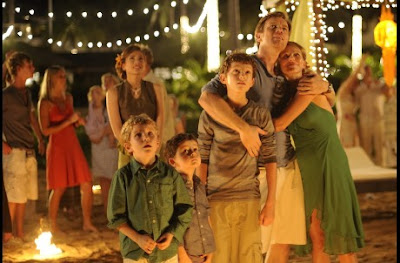 IRON MAN 3
IRON MAN 3Written by Drew Pearce and Shane Black
Directed by Shane Black
Starring Robert Downey Jr., Gwyneth Paltrow, Guy Pearce, Don Cheadle and Ben Kingsley
And so Phase Two of Marvel’s Avengers begins with the release of IRON MAN 3. No pressure, of course, for the hotly anticipated return of Robert Downey Jr. as Tony Stark, arguably the most popular Avenger in the bunch. It’s been three years since Iron Man’s last solo outing but really only one since audience’s got a significant dose of him, and although Downey Jr. could play this part in his sleep if he wanted to, he doesn’t, which might easily explain why I personally have not yet had my fill of him. Still, while I had great fun at THE AVENGERS, I still remember how little fun there was to be had in IRON MAN 2. Tony Stark is a complicated human being and, if allowed to veer too far toward the morose, he can be a bit much to be around. Fortunately, his former depression has now given way for some mildly crippling anxiety, which somehow has allowed the IRON MAN series to come back from overly cynical to just jovially sarcastic. And just like that, Iron Man is fun again!
The root of Tony Stark’s sleepless nights and tortured nightmares is the increasing sense of helplessness he feels to properly protect what he loves. Ever since he came face to face with dozens of alien soldiers in New York city last year, he’s realized that there are threats that are bigger than even he ever thought possible. Sure he and his Avenger buddies vanquished those guys back to whatever galaxy they came from, but what else is waiting out there for just the right time to attack the planet and, more importantly, will anyone be able to stop them next time? To establish some semblance of control in his life, he decides to take on an enemy he can understand, a terrorist known to the world as The Mandarin (played by Ben Kingsley, with more range and commitment than I’ve seen from him in a decade). With Stark not at his best, The Mandarin is able to set him so far back upon his path that he must practically start from scratch. Finding himself stranded in middle America with no armor to protect him, Stark learns what it means to put one foot in front of the other and come back from extinction. It’s sort of like IRON MAN unplugged almost. Sometimes you have to strip away all the distraction to get back to the soul of the song.
There is a great deal of fresh blood pumping through the IRON MAN veins in this third installment, which could account for its revitalized tone. Shane Black, who came to fame for writing LETHAL WEAPON and essentially rewriting the action genre as we know it, takes over from Jon Favreau, who directed the first two IRON MAN entries (and appears again on screen as Happy Hogan, Stark’s unnecessary bodyguard). Black got into the directing game with KISS KISS BANG BANG in 2005, a film that helped Downey Jr. himself get his troubled career back on track. And even though he hasn’t directed a single thing since, let alone anything anywhere near as large as IRON MAN 3, Black manages to push our hero to great depths of despair without piling on heaps of self pity at the same time. The threats against Iron Man are stacked so high, that he has to dig deeper than he ever has before, to be the most super of super heroes he can possibly be in order to survive them. What then in turn endears him further to us, is that the strength he finds doesn’t come from the iron this time around, but rather from digging deeper within the man himself.














































